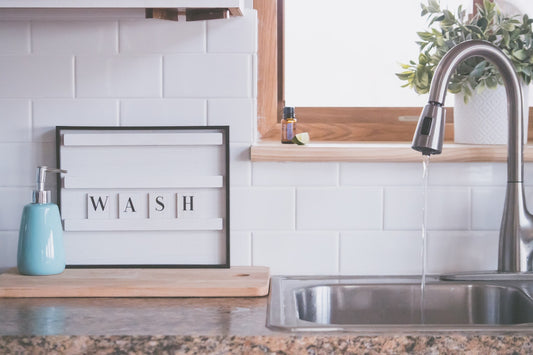Have you noticed that your skin feels dry every time you take a shower? Or perhaps you’ve noticed that your showerhead and faucets always seem to have a scale buildup?
If your water leaves white marks on your shower door, water fixtures, and dishes and dries your skin and hair, it means you have hard water.
Hard water contains a high amount of calcium and magnesium. Now, whenever the water is running in your home, these minerals tend to deposit on your plumbing system, water fixtures, and appliances damaging them in doing so. Studies have even shown that hard water can lead to a reduction of up to 50% in an appliance’s lifespan.
The good news is that there’s an easy solution to this problem! Water softeners are designed to remove hardness-causing minerals from your water, such as calcium and magnesium.
However, the main drawback of using a water softener is that it can release brine into the surrounding environment, harming plants, marine life and damaging your septic systems.
That’s why, if you have a water softener, you need to carefully consider your options when it comes to discharging water softener backwash.
In this post, we’ll explain what water softener backwash is and highlight a few options to safely dispose of it.
What Is Water Softener Backwash?
A water softener works by using a process called ion exchange.
If you’ve installed a water softener in your home, every time you turn a tap on, your water will come through the home's water main into the softener tank. The tank is loaded with ion exchange resin beads charged with sodium ions. Sodium ions have a negative charge, whereas calcium and magnesium have a positive charge.
Now, opposite charges attract. So, as the hard water enters the tank and flows into the resin bed, the calcium and magnesium are attracted to the resin bed and end up trapped in the beads while sodium ions are released.
But the thing is that over time, the resin bed will be covered in scale and debris and will need to be cleaned. This cleaning process is called backwashing.
During a backwash cycle, the water softener is put in a ‘’regeneration’’ mode. And during this process, the resin bed is flooded with brine water, flushing out the hardness. Now, depending on your water softener, the process might need to be repeated weekly. This means that every week, you’re left with gallons of water containing a high amount of calcium, magnesium, and sodium. This solution is called water softener backwash.
Where Can You Discharge Your Water Softener Backwash?
Municipal sewage
One of the most convenient ways to discharge your water softener backwash is by attaching your brine tank directly to the sewage system (referred to as a cross-connection). This is allowed in some places. However, not all municipalities allow residents to discharge their backwash into the local sewage system. So, make sure to check your municipality’s regulations before proceeding!
Dry well
A dry well is a deep hole in the ground featuring porous walls. The hole is typically filled with gravel, allowing for a slow soak of backwash into the groundwater. A dry well is designed so that the drain line runs into the pit, and as water comes through, it soaks into the gravel and slowly disperses underground.
The thing is that in case of a storm or heavy rain, the groundwater will start to rise, which can cause an issue. That’s why you also need to install an overflow pipe to disperse excess water. To avoid any issues, make sure to install your dry well above the water table.
The slow dissipation process avoids a sudden rise in sodium in the surrounding ground, making it the perfect way to dispose of your water softener backwash.
French Drain
A French drain is similar to a dry well, but instead of digging a deep hole for the backwash to disperse underground, a trench is dug over a large area to avoid concentration in the same spot.
The pipe used in a French drain is perforated on one side, and the holes are pointing down. It’s then covered with gravel for a slow dissipation process, just like with a dry well.
Septic Drain Field
A septic tank with a drain field can be another effective way to dispose of your backwash as it allows you to disperse the salt over a large surface and avoid concentration in one area. However, note that some recent studies have shown that the salt contained in backwash could damage septic tanks, so make sure to do your research before opting for this solution.
Sump Pump
Last but not least, you could install a sump basin in your basement to collect the brine and use a sump pump to pump the backwash whenever it reaches a specific level. If you choose this option, your backwash will then need to be drained into the sewage or a dry well.
Where Can I Buy A Salt-Free Water Softener?
One of the main benefits of using a salt-free water softener is that they don’t need to be backwashed. Therefore, they’re not releasing harmful solutions into the ground and won’t damage your septic tank.
If you’re looking for a water softener alternative, don’t hesitate to get in touch with our team. We have been manufacturing high-quality salt-free water softeners and filters in the USA for years and are committed to helping our clients find the best system for their specific needs.






